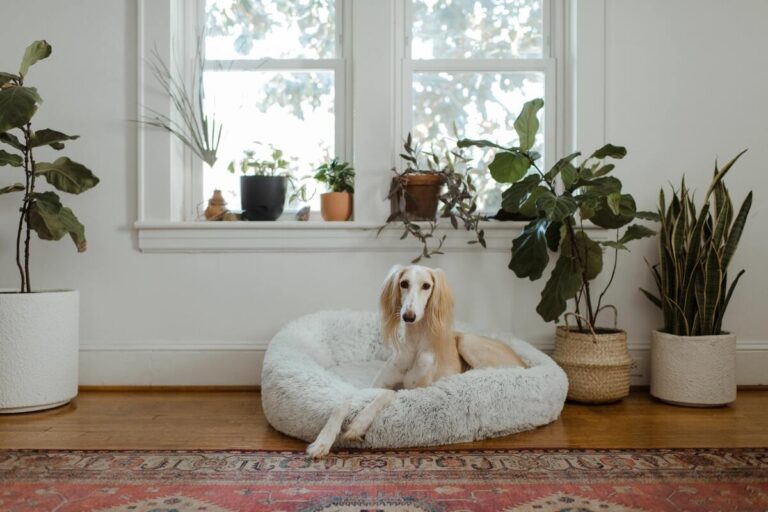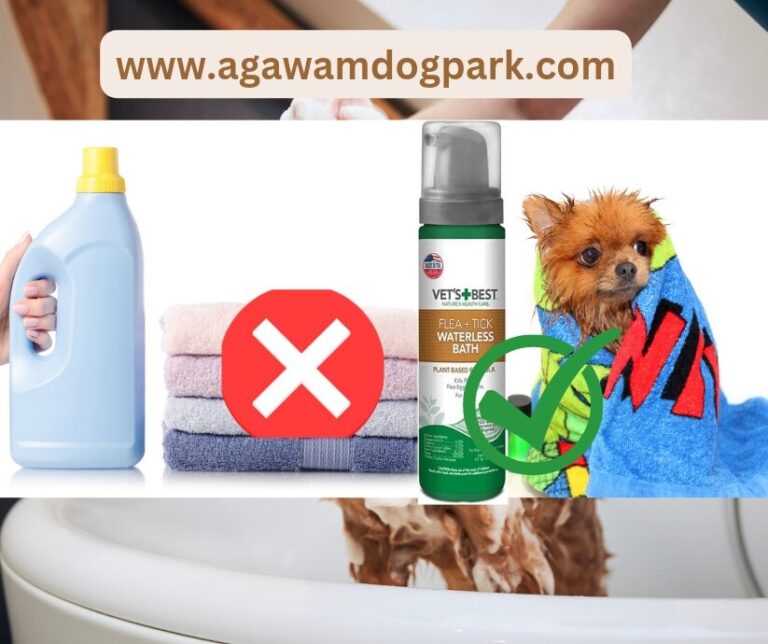How often should you bathe a German Shepherd? Find out here
German Shepherds must be bathed to ensure good health and well-being, but the question is, “How often should you bathe a German Shepherd?” You’ll find out in this article.
Bathing your German Shepherd is an important part of keeping them clean and healthy. However, it is important to strike a balance between keeping them clean and avoiding over-bathing, which can strip their skin of natural oils and cause skin irritation. So, how often should you bathe your German Shepherd? Keep reading to find out more.
Read also: How do I clean a dog’s ears with apple cider vinegar? The best home remedy
How often should you bathe a German Shepherd?
The frequency of bathing a German Shepherd depends on several factors, including their age, health, and lifestyle. In general, it is recommended to bathe a German Shepherd once every 3 to 4 months.
How often should you bathe a short-haired German Shepherd?
Depending on the oiliness of the skin, short-haired German Shepherd dogs may need fewer baths, which can be given at intervals of up to 2 months.
How often should you bathe a long-haired German Shepherd?
For long-haired German Shepherds, it is recommended to bathe them once every 3 to 4 months.
However, if your dog is more active and gets dirty more often, you may need to bathe them more frequently. Conversely, if your dog spends most of their time indoors, they may not need to be bathed as often. The ideal thing to do is to opt for a dry bath, cleaning the coat with a wet towel and paying special attention to the paws and head.
It is important to consider the climate in which you live when determining how often to bathe your German Shepherd. If you live in a warm and humid climate, your dog may need to be bathed more frequently to prevent skin infections and irritation. In contrast, if you live in a dry climate, it is best to avoid over-bathing, which can dry out your dog’s skin.
It is also important to consider your German Shepherd’s health when determining how often to bathe him. If your dog has skin allergies or skin conditions, such as atopic dermatitis, it is best to consult with a veterinarian to determine the appropriate frequency of bathing. Over-bathing can further irritate skin conditions and make them worse.
When bathing your German Shepherd, it is important to use a gentle, dog-specific shampoo that is free of harsh chemicals and fragrances. Avoid using human shampoos, which can be too harsh for a dog’s skin and strip away important oils.
There are veterinary grooming products that can be used to reduce the smell of fur and make it shiny and silky without having to soak the dog in a bathtub (or stick it under the shower). We have taken the liberty of recommending some of them below. Do check them out.
After bathing, be sure to rinse your dog thoroughly to remove all soap residue and dry them thoroughly to prevent skin irritation and infections.
The Dog Anatomy: Why Frequent Bathing Isn’t Needed for Dogs
Unlike humans (and horses too), dogs don’t have sweat glands all over their bodies. After exercising and playing, they need to sweat to balance their body temperature, but the glands are concentrated in the foot pads, the pads they have on their paws.
Read also>> Border Collie Herding Instinct: The best herding dog breed in the world
Dissipation of internal heat occurs mainly through the tongue. Salivation increases proportionally to the increase in body temperature, and when the dog drools, letting saliva flow over the tongue, it eliminates part of that heat.
The excretion of sweat is the task of the footpads (this is why, on hot days, it is recommended to wet the dogs’ paws to dissipate the heat). So dogs don’t get sweaty all over the body (as it does with us), which is why they don’t need daily baths like humans do.
How to bathe a German Shepherd at home in 5 simple steps
Probably, you will not have the chance of taking your dog to a veterinarian for a bath; you may consider bathing the dog at home. In five simple steps, check out how to bathe a German Shepherd at home.
1: Gather supplies
Before you start bathing your German Shepherd at home, make sure you have all the supplies you need, such as dog shampoo, a large basin or tub, a cup for pouring water, a towel, and a brush.
2: Brush your German Shepherd
Brush your German Shepherd to remove any tangles or mats in their fur. This will also help distribute the shampoo evenly during the bath.
3: Wet your German Shepherd
Wet your German Shepherd’s fur with warm water. Start with the head and work your way down to the tail. Make sure to avoid getting water in its ears, which can cause infections.
4: Apply dog shampoo
Apply a generous amount of dog shampoo to your German Shepherd’s wet fur. Massage the shampoo into their fur, making sure to cover every inch of their body. Avoid getting shampoo in their eyes, nose, and mouth.
5: Rinse and dry thoroughly.
The final step on how to bathe a German Shepherd at home is to rinse your dog thoroughly with warm water to remove all the shampoo. Make sure all the soap is removed to avoid skin irritation. After rinsing, use a towel to dry your dog as much as possible and then allow them to air dry.
Is German Shepherd tooth cleaning necessary?
Yes, German Shepherd teeth cleaning is necessary for several reasons.
- Preventing dental problems: Regular teeth cleaning can prevent plaque buildup, gum disease, and tooth decay.
- Maintaining overall health: Poor oral hygiene can lead to bacteria entering the bloodstream, causing infections and affecting overall health.
- Reducing bad breath: Regular cleaning can remove bacteria that cause bad breath.
- Protecting teeth: Regular cleaning can help prevent tooth loss and ensure the longevity of a German Shepherd’s teeth.
- Improving comfort: Teeth cleaning can prevent pain and discomfort in the mouth, making eating and playing more enjoyable.
How often should you trim your German Shepherd’s nails?
It is recommended to trim your German Shepherd’s nails every 4 to 6 weeks, or as needed when you hear them clicking on hard surfaces.
It is important to keep their nails trimmed to avoid overgrowth, which can cause discomfort, pain, and even affect their gait.
Regular nail trimming also helps to keep the quick (the sensitive part of the nail containing blood vessels and nerves) from growing too long, making it easier to trim the nails without causing pain or bleeding.
How often should I clean my German Shepherd’s ears?
German Shepherds are known for their floppy ears and their tendency to get ear infections. To prevent this, it is important to regularly clean your dog’s ears. But how often should you do this?
The frequency of cleaning your German Shepherd’s ears depends on several factors, including the dog’s activity level, environment, and health. Generally speaking, once a week is a good rule of thumb for most German Shepherds. However, some dogs may need to have their ears cleaned more frequently, especially if they have a history of ear infections or if they are prone to excessive wax buildup.
It’s important to use a gentle and safe ear cleaning solution, as recommended by your veterinarian. Never use cotton swabs or any other sharp objects to clean your dog’s ears, as this can cause injury to the delicate ear canal. Clean the visible part of the ear flap and gently massage the base of the ear to help loosen any wax or debris.
If you notice any redness, swelling, discharge, or odor coming from your dog’s ears, it may be a sign of an infection, and you should contact your veterinarian for treatment.
Read also>> How long can a dog hold its urine? These tips will shock you
Final thoughts
So guys, I hope I have been able to pass along detailed information on the topic of “How often should you bathe a German Shepherd?” Just bear in mind that the frequency of bathing a German Shepherd depends on several factors, such as the dog’s lifestyle, skin type, and environmental factors.
On average, it’s recommended to bathe a German Shepherd once every three months, but it may be necessary to bathe more frequently if the dog is particularly active, dirty, or has skin problems. It’s always best to consult with a veterinarian for personalized recommendations based on your dog’s specific needs.







